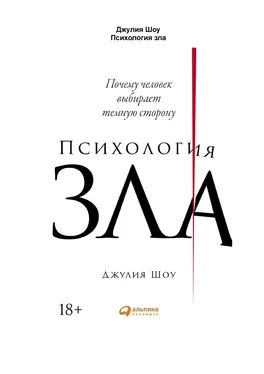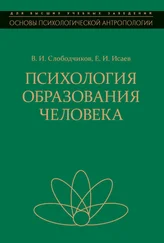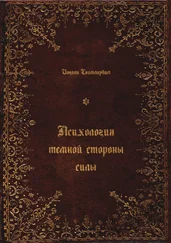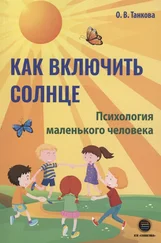Evans, M., ‘One in 35 men has paedophile tendencies’, Daily Telegraph, 22 June 2015; http:// www.telegraph.co.uk/news/uknews/11690451/One-in-35-men-has-paedophile-tendencies-crime-agency-claims.html.
Cantor, J. M., & McPhail, I. V. ‘Non-offending pedophiles’. Current Sexual Health Reports, 8 (3) (2016), pp. 121-28.
Richards, K. ‘Misperceptions about child sex offenders’. Trends and Issues in Crime and Criminal Justice, 429 (2011), p. 1.
Langstrom, N., Enebrink, P., Lauren, E. M., Lindblom, J., . . . & Hanson, R. K. ‘Preventing sexual abusers of children from reoffending: systematic review of medical and psychological interventions’. British Medical Journal, 347 (2013), f4630.
Stoltenborgh et al. ‘A global perspective’.
Radford, L., Corral, S., Bradley, C., Fisher, H., . . . & Collishaw, S. ‘Child abuse and neglect in the UK today: research into the prevalence of child maltreatment in the United Kingdom’. NSPCC (2011).
Glasser, M., Kolvin, I., Campbell, D., Glasser, A., . . . & Farrelly, S. ‘Cycle of child sexual abuse: links between being a victim and becoming a perpetrator’. British Journal of Psychiatry, 179 (6) (2001), pp. 482-94.
Widom, C. S., & Massey, C. ‘A prospective examination of whether childhood sexual abuse predicts subsequent sexual offending’. JAMA Pediatrics, 169 (1) (2015); https://doi.org/10.1001/jamapediatrics.2014.3357; and Lee, J. K., Jackson, H. J., Pattison, P., & Ward, T. ‘Developmental risk factors for sexual offending’. Child Abuse & Neglect, 26 (1) (2002), pp. 73-92.
Babchishin, K. M., Hanson, R. K., & VanZuylen, H. ‘Online child pornography offenders are different: a meta-analysis of the characteristics of online and offline sex offenders against children’. Archives of Sexual Behavior, 44 (1) (2015), pp. 45-66.
Seto, M. C., Cantor, J. M., & Blanchard, R. ‘Child pornography offenses are a valid diagnostic indicator of pedophilia’. Journal of Abnormal Psychology, 115 (3) (2006), p. 610.
Cantor, J. M. ‘Gold star pedophiles in general sex therapy practice’. Principles and Practice of Sex Therapy (2014), pp. 219-34.
‘Are paedophiles’ brains wired differently?’ BBC News, 24 November 2015; http://www.bbc.co.uk/news/magazine-34858350.
Cantor, J. M., Kuban, M. E., Blak, T., Klassen, P E., . . . & Blanchard, R. ‘Physical height in pedophilic and hebephilic sexual offenders’. Sexual Abuse: A Journal of Research and Treatment, 19 (4) (2007), pp. 395-407.
Cantor, J. M., Klassen, P E., Dickey, R., Christensen, B. K., . . . & Blanchard, R. ‘Handedness in pedophilia and hebephilia’. Archives of Sexual Behavior, 34 (4) (2005), pp. 447-59.
Blanchard, R., Kolla, N. J., Cantor, J. M., Klassen, P E., . . . & Blak, T. ‘IQ, handedness, and pedophilia in adult male patients stratified by referral source’. Sexual Abuse: A Journal of Research and Treatment, 19 (3) (2007), pp. 285-309.
Cantor, J. M., Lafaille, S. J., Hannah, J., Kucyi, A., . . . & Mikulis, D. J. ‘Independent component analysis of resting-state functional magnetic resonance imaging in pedophiles’. The Journal of Sexual Medicine, 13 (10) (2016), pp. 1546-54.
Cantor et al. ‘Independent component’.
Joyal, C. C., Beaulieu-Plante, J., & de Chanterac, A. ‘The neuropsychology of sex offenders: a meta-analysis’. Sexual Abuse, 26 (2) (2014), pp. 149-77.
Seto, M. C. Pedophilia and Sexual Offending Against Children: Theory, Assessment, and Intervention. New York: American Psychological Association, 2007.
Cantor, J. M., Lafaille, S., Soh, D. W., Moayedi, M., . . . & Girard, T. A. ‘Diffusion tensor imaging of pedophilia’. Archives of Sexual Behavior, 44 (8) (2015), pp. 2161-72.
Houtepen, J. A., Sijtsema, J. J., & Bogaerts, S. ‘Being sexually attracted to minors: sexual development, coping with forbidden feelings, and relieving sexual arousal in self-identified pedophiles’. Journal of Sex and Marital Therapy, 42 (1) (2016), pp. 48-69.
McGuinness, D. ‘Germany urges paedophiles out of the shadows’. BBC News, 13 July 2015; http://www.bbc.co.uk/news/magazine-33464970.
Troup Buchanan, R., ‘In Germany, they treat paedophiles as victims’. Independent, 14 July 2015; http://www.independent.co.uk/news/world/in-germany-they-treat-paedophiles-as-victims-not-offenders-10387468.html.
McGuinness. ‘Germany urges paedophiles’.
McMillan, J. ‘The kindest cut? Surgical castration, sex offenders and coercive offers’. Journal of Medical Ethics, 40 (9) (2014), pp. 583-90.
Grubin, D., & Beech, A. ‘Chemical castration for sex offenders’. British Medical Journal, 304 (2010); https://doi.org/10.1136/bmj.c74.
McMillan. ‘The kindest cut?’
Lee, J. Y., & Cho, K. S. ‘Chemical castration for sexual offenders: physicians’ views’. Journal of Korean Medical Science, 28 (2) (2013), pp. 171-72.
Lewis, A., Grubin, D., Ross, C. C., & Das, M. ‘Gonadotrophin-releasing hormone agonist treatment for sexual offenders: a systematic review’. Journal of Psychopharmacology (2017); https://doi.org/10.1177/0269881117714048.
Berlin, F. S. ‘“Chemical castration” for sex offenders’. New England Journal of Medicine, 336 (14) (1997), pp. 1030-31.
‘Brian Hopkins, smuggler of child sex doll’. BBC News, 1 September 2017; http://www.bbc.co.uk/news/uk-england-devon-41130328.
‘Strategic Plan: 2013-2017’, Compassion in World Farming; https://www.ciwf.org.uk/media/3640540/ciwf_strategic_plan_20132017.pdf.
Murphy, H. ‘Fish depression is not a joke’. The New York Times, 16 October 2017; https://www.nytimes.com/2017/10/16/science/depressed-fish.html.
Bastian, B., & Loughnan, S. ‘Resolving the meat-paradox: a motivational account of morally troublesome behavior and its maintenance’. Personality and Social Psychology Review 21 (3) (2017), pp. 1-22; https://doi.org/10.1177/1088868316647562.
Festinger, L. A Theory of Cognitive Dissonance. Evanston, IL: Row, Peterson & Co., 1957.
Festinger, L., & Carlsmith, J. M. ‘Cognitive consequences of forced compliance’. Journal of Abnormal and Social Psychology, 58 (2) (1959), p. 203.
Фестингер Л. Теория когнитивного диссонанса. — СПб.: Речь, 2000.
Grauerholz, L. ‘Cute enough to eat: the transformation of animals into meat for human consumption in commercialised images’. Humanity & Society, 31 (4) (2007), pp. 334-54.
Bastian & Loughnan. ‘Resolving the meat-paradox’, pp. 278-99.
Читать дальше
Конец ознакомительного отрывка
Купить книгу












